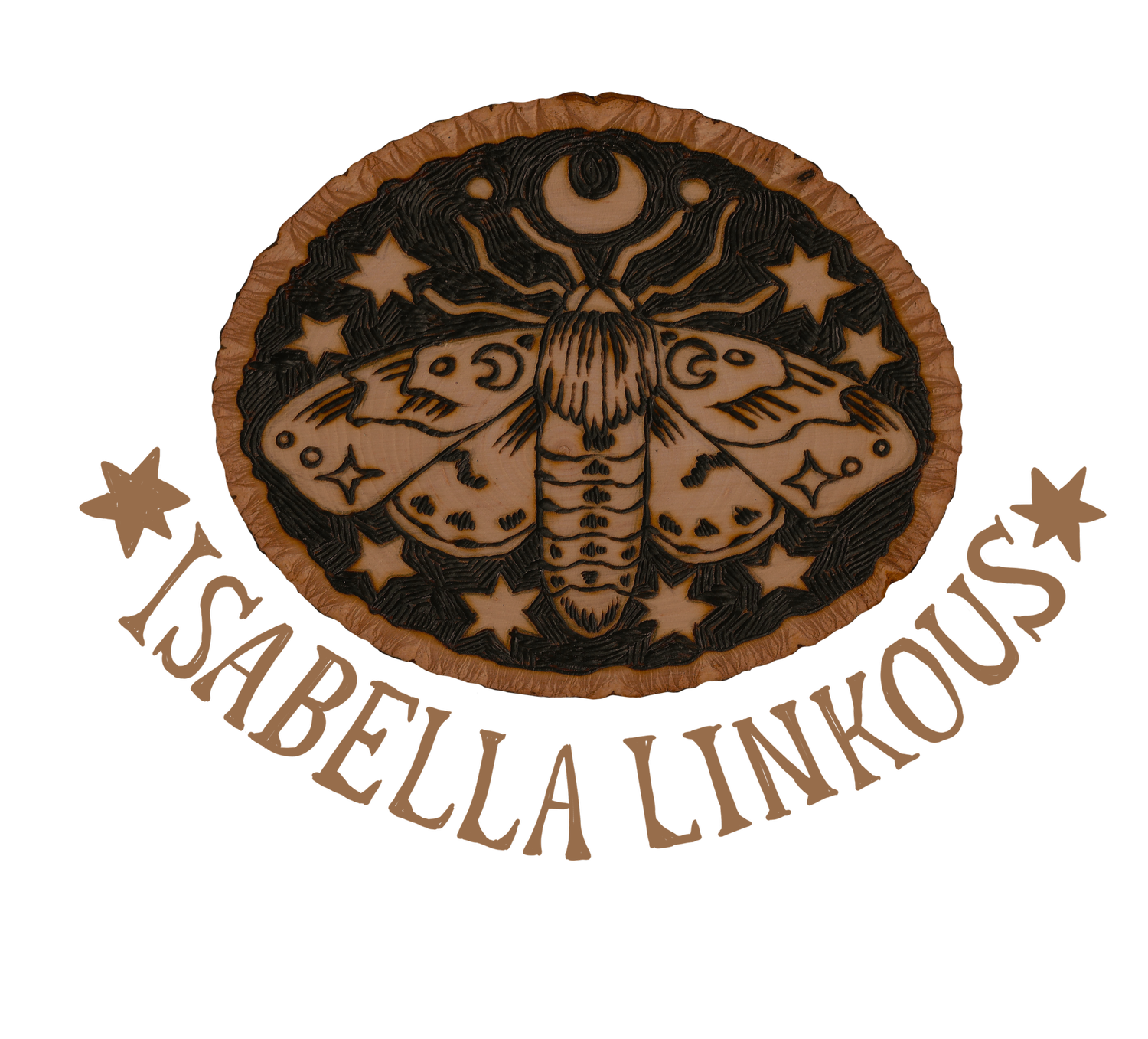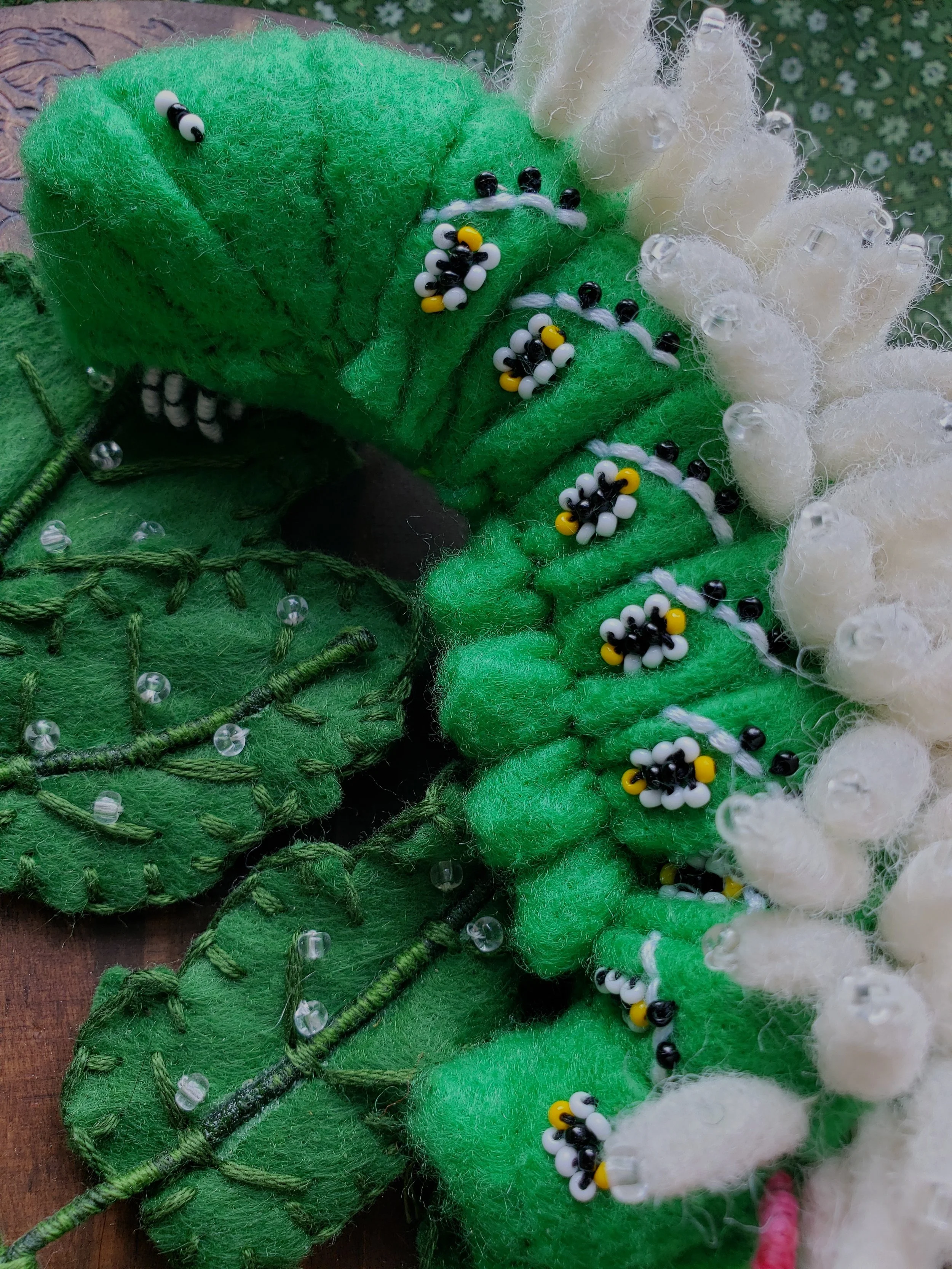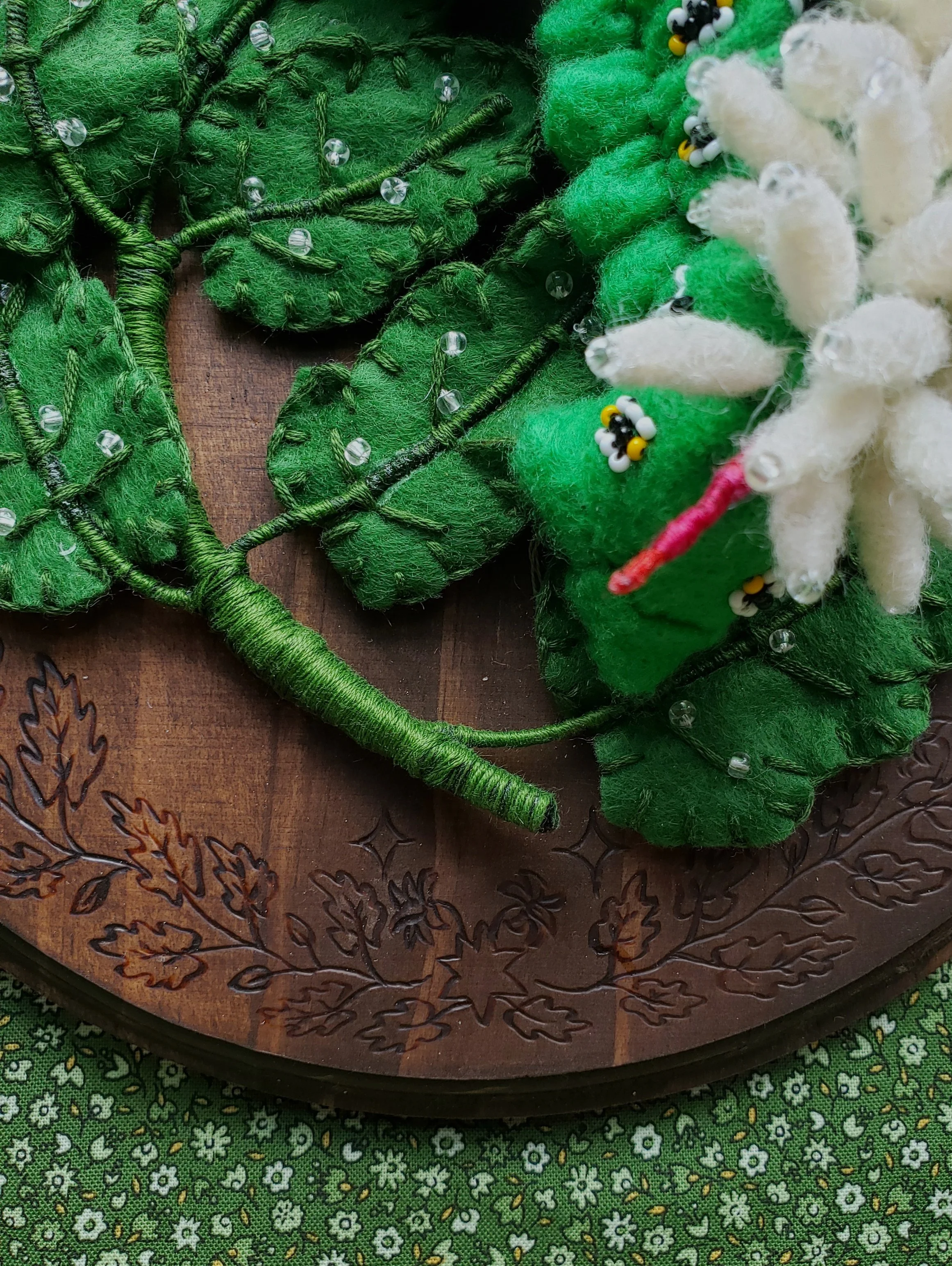
Hornworm With Wasp Eggs
2021
8 1/2’’x 8 1/2’’
felt, beads, embroidery thread, wire, felted forms
soft sculpture secured onto a stained wooden plaque with woodburn filigree
Artist Notes
One late-summer day during my first year gardening at Radford, or at any place for that matter, I went outside to prune the tomatoes. We weren’t having beginner’s luck and were pretty sure they had blight, but we were still trying to fix the issue. I walked up to the plants to see a hornworm with about 30 white cocoons laced on its back. I had never seen this before. I had actually never seen a hornworm in the wild before that day I thought they were an insect that could only be purchased in small plastic containers at local pet stores as feeder insects. So it was really astounding to see one, on my tomato plant, in my backyard.
I remember needing to know what was going on on his back. I should have been upset because he was just further damaging our dying plant, but I was just sad. I didn’t know what was in the eggs, but I knew what it meant for his future. They would hatch, and he would become their meal. He looked so healthy, and he had made quite a dent in the leaves, yet in just a matter of a week or more, he would be gone, and the insects would be taking his place.
This day had a pretty substantial impact on me. I remember being intrigued but then being so heartbroken for the fate of the worm. I called my granny to tell her about my discovery, and she was pretty disgusted by the existence of the worm, especially the eggs on the back of it. She didn’t see what I saw or felt what I felt for him. She only heard bug and then grimaced.
I eventually looked up the eggs. They are the product of a type of parasitic wasp called the braconid wasp. The larvae form in their cocoons and, when the time comes, hatch, burrow into, and feed on the hornworm from the inside out. I remember thinking what a horrible and gruesome way to go out of this world. He is so small. Does he know his inevitable demise?
Little did I know but this small discovery would result in a plethora of insect-inspired wood burnings and felt sculptures. This is one of many. This is a tribute to the small beings lost and overlooked.







